
5G cellular networks are finally here but only if you have some disposable income and a 5G compatible phone. 5G smartphones are sparse right now but you still have options to choose from. That’s why we pitted the best 5G phones head to head to find the pros and cons of all the options out there. Read on below the get the scoop.
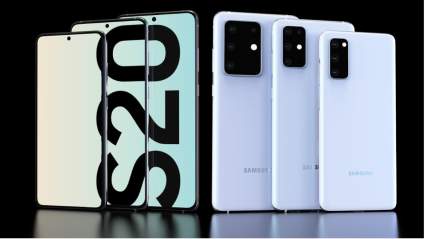
|
Amazon Customer Reviews
|
Price: $999.99 Shop at Amazon | Shop now Read our review |
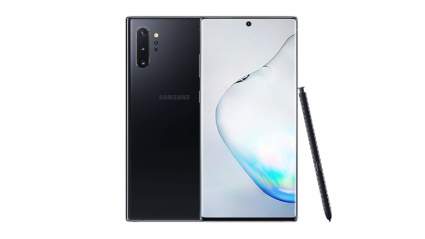
|
Amazon Customer Reviews
|
Price: $1,585.29 Shop at Amazon | Shop now Read our review |
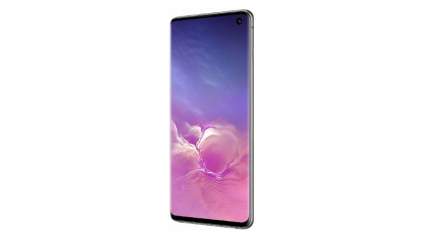
|
Amazon Customer Reviews
|
Price: $223.99 Shop at Amazon | Shop now Read our review |

|
Amazon Customer Reviews
|
Price: $977.77 Shop at Amazon | Shop now Read our review |
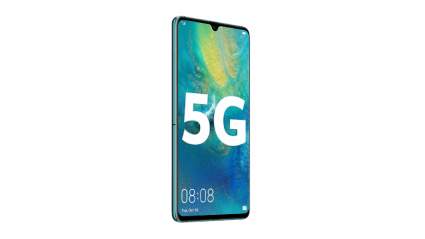
|
Amazon Customer Reviews
|
Price: $2,389.00 Shop at Amazon | Shop now Read our review |
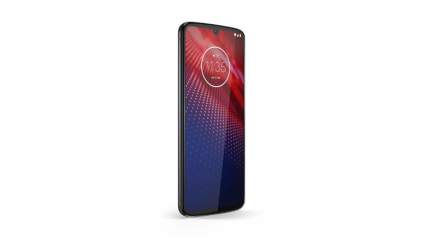
|
Amazon Customer Reviews
|
Price: $899.99 Shop at Amazon | Shop now Read our review |
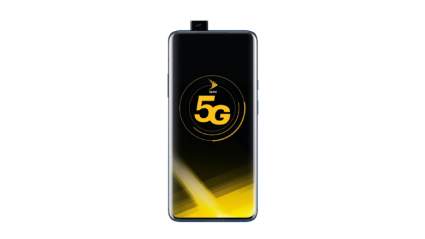
|
|
Price: $890.00 Shop now at Best Buy | Shop now Read our review |
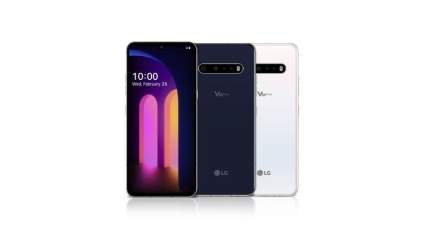
|
|
Price: $899.99 Shop now at lg.com | Shop now Read our review |
-
1. Samsung Galaxy S20/S20+/S20 Ultra
Pros:- WQHD+ 120 Hz display
- Samsung's best cameras
- 5G with all major carriers
Cons:- High price tag
- No headphone jack
- Battery life could be better
Whether you are interested in the Galaxy S20, the Galaxy S20+, or the Galaxy S20 Ultra, all of Samsung’s latest smartphone line comes fully equipped to handle both 4G and 5G networks, making it the best option for tech enthusiasts looking to switch to 5G in 2020. Because of the popularity of the Galaxy series, this phone works with all four major carriers (Verizon, AT&T, T-Mobile and Sprint) as long as it is offered in your area.
5G support is by no means where the high-tech innovation ends, though. Each of these phones sports an updated WQHD+ display that supports HD10+ and a 120 Hz refresh rate. Camera upgrades can be found on each version of the phone but the S20 Ultra, in particular, stands out with its quad-lens camera array. Its wide-angle lens captures 108MP of visual data in each picture and can record 8K video at 24 FPS.
Unfortunately, the downside of being on the cutting edge is that the latest and greatest tech carries a borderline excessive price tag. The S20 Ultra is almost prohibitively expensive. If that is not a key factor in your purchasing decision, though, then any phone from the S20 series is a top choice for joining the 5G revolution.
-
2. Samsung Galaxy Note 10+ 5G
Pros:- Gorgeous 6.8-inch AMOLED Infinity Display
- Rear quad-camera array
- Included motion control S Pen
Cons:- International version does not work with CDMA networks (Verizon, Sprint, US, T-Mobile)
- High price tag
- Phone is ridiculously large
Currently, the Samsung Galaxy Note 10+ 5G is one of the best 5G phones available by merit of its incredible specs and its ability to work with any of the major US 5G service providers. As long as you get the US version, that is. What we have here is the international version, which only works with select GSM networks and not CMDA networks.
For US users, the international version of this phone will only work with AT&T in select areas, though we were unable to confirm this via Frequency Checker. You can find a US version direct on most 5G providers’ websites but we will continue to use this as a place-holder for when an unlocked US version becomes available on Amazon.
As for the phone itself, the Note 10 Plus is a top-tier phablet, whose only compromises are a massive form factor and an equally massive price tag. The positive side of this is its generous 6.8-inch Infinity Display, which is made from a beautiful AMOLED panel that is HDR10+ compatible.
The phone also has an incredible rear quad-camera array, with wide, ultrawide, and telephoto lenses built right in. It can record ultra slow-motion 960fps videos at 720p and normal speed 2160p videos at 30fps.
It also comes with the pressure-sensitive S Pen device, which can be used to scribble notes down, do a doodle, or make touch-free gestures to swipe through menus. This phone does, however, mark the end of the headphone jack for Samsung phones. Goodnight, sweet prince.
-
3. Samsung Galaxy S10 5G
Pros:- Gorgeous Infinity-O Display
- Tri-lens rear camera array
- Wireless PowerShare capability
Cons:- Only refurbished models available
- Mediocre biometrics
- 5G service only compatible with Verizon
The Galaxy S10 is Samsung’s first phone to receive a 5G variation, making it an easy choice for Android enthusiasts looking to join the nation’s first wave of 5G customers. This big downside? The S10 5G is already out-of-stock on Samsung’s website, so if you want to get ahold of this handset now you’ll have to settle for a refurbished model on Amazon.
A used phone isn’t the end of the world, though, especially since the S10 5G will eventually be outclassed by a standalone 5G phone. Since 5G networks haven’t reach nationwide coverage yet, this handset has two wireless chipsets, one to support 5G and one to support 4G/3G/2G. Switching from 5G to 4G is totally seamless, so this phone is basically a direct upgrade of the normal Galaxy S10.
Networking technology aside, the Galaxy S10 is a fantastic smartphone that will continue to be competitive with current phones well past 5G’s launch (assuming 2020 is the year of 5G as promised). One of the premier features of the phone is its Infinity-O Display. It has a 6.7-inch Dynamic AMOLED touch display that curves across the side edges of the phone. It is HDR10+ certified and can light individual LEDs for a low-power always-on screensaver.
This phone also has an incredible rear tri-lens camera array, which can snap a picture at multiple focal points then stitch them all together for a crystal-clear shot. Factor in its impressive 4500mAh battery and you’ve got a phone that delivers just about everything you could ask for.
The Galaxy S10 has other gimmicks going for it too, some good and some bad. The good includes their Wireless PowerShare feature, which allows your phone to wirelessly charge out to other Qi-compatible devices. The bad includes a somewhat mediocre use biometric features like fingerprint scanners and facial recognition software.
But, like 5G, biometrics will soon have an even more crucial place in the smartphone universe, so you can’t blame Samsung for trying to walk on the cutting edge.
-
4. Oppo Find X2 Pro
Pros:- 6.7-inch AMOLED display
- Solid Snapdragon 865 processor
- Dual-SIM support
Cons:- High price tag
- UI can be sluggish
- No wireless charging
Don’t feel bad if you haven’t heard of the Oppo Find X2 Pro. Oppo is one of the newest smartphone manufacturers from China and 5G phones are their claim to fame. This is their third 5G phone and is easily their most feature-packed handset. For being an international phone, it supports a surprising amount of signals from the big four. You can check this in more detail on Frequency Checker. This phone also has a dual-SIM system that allows two lines to use 5G service simultaneously.
Its Snapdragon 865 processor isn’t the absolute latest available from Qualcomm but performance still seems mostly smooth. If anything, its custom UI gets a little funky at times but that may also be because I am used to the responsiveness of my Galaxy S10. As a brand, Oppo still has a lot more to prove but their early support for 5G may yet propel them to a higher tier in the coming years.
-
5. Huawei Mate 20X 5G
Pros:- 7.2-inch OLED FHD+ display
- Rear tri-camera array records 4K
- Massive 5000mAh battery
Cons:- International version does not work with CDMA networks (Verizon, Sprint, US, T-Mobile)
- May soon drop Google Store support
- Company's behavior raises ethical concerns
This phone has the best battery life in its price range and it still has an auxiliary headphone jack. Yes, there are rumors that Huawei will be ditching support for apps on the Google Play Store, but for now, Huawei’s ROM support exists in a state of duality in the same way its wireless support straddles 4G and 5G.
Chinese electronics juggernaut Huawei may be under scrutiny for conducting surveillance for the Chinese government, but their Mate 20X 5G is nevertheless one of the most viable choices for an early 5G handset.
Politics aside, Huawei dominates the market in terms of price value, especially when non-standalone 5G handsets already cost extra for needing two discrete wireless chips. The international version of this phone comes at a respectable price, especially considering its specs. However, the catch is that it does not work on CDMA network, including Verizon, Sprint, US, and T-Mobile.
According to Frequency Check, the Huawei Mate 20X currently only works with AT&T, so it being unlocked isn’t as liberating as it should be for the potential 5G customer. So not only do you have to be within the geographic coverage of AT&T but you also have to already have them as a provider. Welcome to the world of early 5G.
When you look at the Mate 20X as a handset, there are finally a lot more positive things to talk about. After all, it is a well-built phone. The 7.2-inch AMOLED display provides vibrant colors and a crisp resolution. Its rear tri-camera array has a dedicated telephoto and ultrawide lens for clear shots from any angle. It also records 4K video.
-
6. Moto Z4 + 5G Moto Mod
Pros:- Solid 6.4-inch OLED display
- Low price tag
- 2 day battery life
Cons:- Only works with Verizon networks
- Processor could be better
- Requires the 5G Moto Mod
The Moto Z4 is somewhat of an outlier on this list, only for the fact that it is ca mid-range phone that has found itself listed alongside high-end handsets by the grace of a 5G expansion option. Looking first at the specs of this phone, it is clear that it doesn’t quite match the performance of heavy hitters like the Galaxy S10 or the Huawei Mate 20X.
It has a mediocre Snapdragon 675 processor and a basic 4 GB of RAM. Its 6.4-inch OLED display has a decent resolution but its color recreation is not as accurate. There aren’t total dealbreakers since the price is right, but you also need to keep in mind that the Moto Z4 needs some modifications out of the box to support 5G.
If you want to use this phone on 5G networks, you will need a special moto mod pack that is available only at Motorola’s website. This replacement backplate just about doubles the price of the phone and adds some bulk as well, so it is clearly not the most high-tech way of experience 5G. To further complicate things, it only works with Verizon 5G networks and no other providers.
Regardless, it is still a successful proof-of-concept for 5G cellular data. Plus, the Moto Mod does have the added benefit of a built-in battery pack, which easily extends the Moto Z4’s battery life to beyond 2 days.
Still, if your goal is to have the most advanced wireless cell network support, then it just feels wrong to settle for a mid-range handset unless you already own one.
-
7. OnePlus 7 Pro 5G
Price: $890.00Pros:- Solid 6.67-inch 90Hz OLED display
- Speedy Snapdragon 855 processor
- Minimal bloatware
Cons:- Locked to Sprint service
- Cameras could be better
- Sprint may not extend its 5G network
The OnePlus 7 Pro might not be a top name in mobile phones yet but it is well on its way because of the company’s trailblazing venture into non-standalone 5G support.
Currently, they only offer 5G support with Sprint, who services Atlanta, Chicago, Dallas-Fort Worth, Houston, Kansas City, Los Angeles, New York, Washington, D.C., and Phoenix. When you leave those areas, you will still have access to 4G LTE networks, though, as a phone that only supports 5G would be useless for at least another year. Sprint’s plan isn’t up to gigabit speeds yet but they still mark an improvement over the capabilities of the 4G network.
Even when you remove 5G support from the equation, the OnePlus 7 Pro is a solid phone that should not be quickly discounted just because it’s competing with Samsung. Its specs are on par with most other 2019 smartphones that ship with Android 9.0 Pie. Its 6.67-inch OLED display has QHD+ resolution and refreshes at 90Hz. It is just as vibrant and bright as other phones in its price range.
The OnePlus 7 Pro also has some solid image processing, with a rear tri-camera array whose pop-out LED flash visually defines the phone. These lenses can record 4K video with fantastic accuracy though they don’t quite look as well-defined as Samsung’s imaging. Still, the lower price of the OnePlus 7 Pro makes it an appealing choice.
-
8. LG V60 ThinQ 5G
Price: $899.99Pros:- Dual-Screen accessory
- Gorgeous 6.8-inch OLED display
- Fast Snapdragon 865 processor
Cons:- Camera could be better
- Not available unlocked (yet)
- Large bezel
The LG V60 ThinQ currently ships with an interesting Dual Screen accessory and is 5G ready out of the box, making it an intriguing choice for those looking to immerse themselves in new tech. Keep in mind the Dual Screen accessory is just that: an accessory to only be used for specific situations. Otherwise, it adds way too much bulk for daily use, especially on a phone with this much bezel. This phone offers 5G support through AT&T, T-Mobile, and Verizon, each of which only covers larger cities at this time. Things will be looking even better when an unlocked version becomes available too.
What we will judge a little more harshly is the slightly dated hardware of this phone compared to its price tag. The Snapdragon 865 processor is solid but the 6.8-inch OLED display is nice even though its refresh rate is a modest 60 Hz. Its rear camera array and front cameras are great but these days that can be said for pretty much any phone.
Ultimately, it’s not that we dislike the V60 ThinQ, but rather that it offers very little besides 5G support to warrant its choice over more tried-and-true models. Unless you are also really into the Dual-Screen feature, in which case, this phone is actually an interesting compromise.
What is 5G?
To put it into as simple terms as possible, 5G is the next generation of wireless technology, which marks massive improvements over the data transfer speed, latency, and bandwidth of the current 4G LTE standard.
The reason that its rollout is so important to the cell phone industry is that this new standard completely changes the game by increasing the max data transfer speed by ten times that of 4G. Currently, cell phone carriers are promising speeds between 1 and 10 Gbps, which is fast enough to download a full 4K movie in just seconds.
Another reason that the 5G radio system is so important is that it is not compatible with 4G, so it requires an all-new cellular infrastructure to be created. At this time, most 5G cell phones on the market have what's called 5G NSA (or "not standalone"), which uses the 4G infrastructure as support.
5G NSA uses urban hotspots to deliver millimeter-wave (a signal 600MHz or lower) frequencies to compatible devices, allowing them to take advantage of the speed boost in limited scenarios. By next year, most of the big four service providers are expected to have a standalone 5G network — at least in select locations.
Where is 5G Available?
At this time, 5G is only being rolled out to limited cities in the US. The best place to track availability near you is via Ookla's 5G Rollout Map, which shows 5G coverage around the world as it develops.
Just make a note that this map differs between "commercially available" 5G and "limited availability," which is an important distinction. A small amount of the available 5G networks are being used more like a private beta test, which you shouldn't take as a guarantee that you would be able to access it anytime soon. But that much should already be apparent if it is integrated with 4G coverage.
Which Provider Has the Best 5G Coverage?
Verizon, Sprint, AT&T, and T-Mobile are the four largest cell carriers in the world, but they are endlessly trading places on the 5G. That's why we recommend periodically checking out PC Mag's Race to 5G leaderboard, which tracks each company's advancement towards a primetime 5G rollout.
At the moment, Sprint has the most 5G coverage in the nation but because this is a 5G NSA plan marketed as true 5G, its speeds won't be as impressive we've promised so far. Still, 200 Mbps is nothing to balk at.
How Much Does 5G Service Cost?
You may be surprised to find that the first 5G cellphone plans are reasonably priced even considering their limitations. This 5G cell phone plan list from Whistle Out lays down the price differences between Verizon, Sprint, AT&T, and T-Mobile.
That said, these plans offer mostly 4G coverage on 5G networks, with limited millimeter-wave 5G access near urban hotspots. You should definitely research your local infrastructure before you are won over by the price tag, as coverage means everything in the cellular industry.
So until we start to see more standalone 5G services become available, it is hard to estimate what the final price will be for this sort of service.
See Also
21 Best Samsung Galaxy S20 Ultra Cases